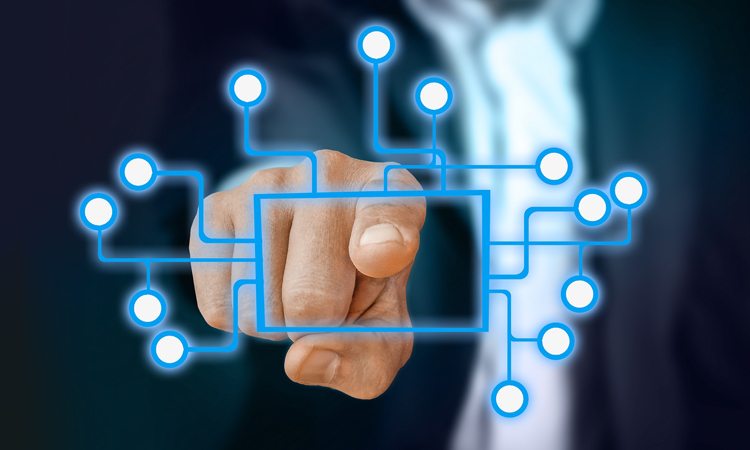Inside the doors of Intel’s Chandler offices lies the future.
Within the walls of Intel’s building CH6, demonstration stations reveal some of the latest technology powered by Intel processors.
Each piece of technology will radically change supply chain management, construction, engineering and retail.
• High above the floor is a sensor that is able to determine the amount of inventory available on the floor at a brick-and-mortal retail location.
• Next to that is another sensor that can measure the dimensions of boxes and packages as they move along a conveyor belt.
• Close to that station are small trackers that can tell whether deliverables have been critically tilted or kept at inadequate temperatures during the shipping process.
• An augmented reality helmet allows the user to view the step-by-step process of a surgical procedure or the schematics of a turbine as if both things were happening in reality in front of the user.
This is Industry 4.0. Otherwise known as the Internet of Things, or IoT.
David Formisano, the director of strategy for Intel’s Internet of Things Solutions Group in Chandler, says Intel recently had an entire street lamp within the lobby, which had been outfitted as a smart version of the familiar street corner staple, except this one came with sensors and solar panels.
The Internet of Things is the concept of connecting normal devices to each other, cloud platforms and the Internet itself. Internet of Things is a broad concept that spans from sensor technology to the cloud.
We’re familiar with many of these IoT devices — cellphones, televisions, wrist watches and thermostats. There are projected to be almost 30 billion Internet-connected devices by 2030.
When it comes to industry, the Internet of Things will bring both sensors and data that businesses can use to create new experiences, or even get into new businesses, Formisano says.
“That data is valuable and it gives you different insights you didn’t have before,” Formisano says. “So, I think across a variety of use cases — from retail to industrial to healthcare to transportation. We’re going to see the Internet of Things transform how those businesses operate today.”
Make way for the connected region
The Greater Phoenix Economic Council wants the Valley to become a game-changer in the world-changing space that is the Internet of Things.
Currently, Chris Camacho, president and CEO of GPEC, is in the process of trying to brand and position the Greater Phoenix area as the world’s first multi-jurisdictional smart region.
“No one market across the country has unified multiple jurisdictions,” Camacho says. “There’s been strategies to do smart cities in various places, but we’re talking about, ‘how do we connect the entire region.’”
This would include the creation of smart infrastructure, smart transportation connectivity and smart communities being built, Camacho says, in order to turn the Greater Phoenix region into a Connected Place.
Camacho has seen many local companies heading towards one direction: a world based around the Internet of Things. Companies throughout the state and in the Greater Phoenix area — aerospace and defense, healthcare and technology industries — have been heading towards this game-changing future.
“Part of this was a true industry transformation,” Camacho says. “And the other part was this inclination from GPEC that we had to create a broader identity of our industries to help go out and tell the story to the world.”
Tell it, they did
GPEC has worked to attract several firms operating in the Internet of Things space to the Greater Phoenix area.
The list includes cybersecurity firms like Kudelski, which set up its North American headquarters in Phoenix in 2016; Bishop Fox, which moved to a new office in Phoenix in 2015; and Acronis, which opened a sales office here in 2017.
It’s known that Amazon has distribution centers here in the Valley, and the Seattle-based e-commerce giant is currently investing in Industry 4.0 technologies for those centers, according to GPEC.
GPEC has also attracted manufacturers who are making Internet of Things devices. Dexcom recently opened a 180,000-square-foot manufacturing facility in Mesa for its growing continuous glucose monitoring business, which creates wearable devices for patients with diabetes.
Dexcom was attracted to the Greater Phoenix region due to the high availability of talent in the Greater Phoenix area that could be used to staff its manufacturing facility.
Manufacturing will begin in Mesa in April and the facility currently has 265 employees, Dexcom states. Dexcom plans to have 600 to 700 employees in Mesa by the end of 2018.
Dexcom had a Greater Phoenix area connection before expanding into Mesa. While Camacho and his team were recruiting the San Diego-based company, they learned that Dexcom uses local chips for its devices from ON Semiconductor, he says.
Another Dexcom supplier, The West Group, is based in Tempe, according to Dexcom. It says having that kind of proximity for its supplier of molded components helps the firm with transportation costs and with potential partnerships on future plans.
Picking up where they left off
In February of 2017, Intel’s CEO, Brian Krzanich, announced at the White House that Intel would invest $7 billion in Chandler to complete the chip maker’s Fab 42 factory, which Intel expects to be the most advanced semiconductor factory in the world.
Intel started building the factory in 2011, when it was aiming to have its 14-nanometer (nm) node built there. But, according to its vice president and general manager of technology and manufacturing, Intel deferred the construction when they were able to fit the capacity for the 14-nm tech into its existing facilities in Chandler.
Now, Fab 42 will be aiming to create Intel’s 7-nm node, which will unlock the “most cutting-edge capabilities” for things like data analytics, machine learning and deep learning, says Formisano, Intel’s IoT leader.
“The 7-nm process node is going to power a whole new generation of products and capabilities that today’s technology doesn’t yet provide,” Formisano says about the technology that Fab 42 will produce in Chandler for Internet of Things devices.
For more than 30 years in Arizona, Intel operated its embedded business, which worked to place Intel processors into physical devices like cash registers and ATMs. Intel’s Internet of Things business was born out of its embedded business and as technology advanced, allowing those devices to become connected to the cloud and beyond, Formisano says.
With many high-tech companies and innovative institutions like Arizona State University operating within the Greater Phoenix region, it is a great place for Intel’s IoT business, he says.
Through its internship program, Intel is able to tap into the latest minds entering the Internet of Things space. Some of those interns go on to work full-time for Intel after they graduate, Formisano says.
Intel has even partnered with ASU during the Sun Devil Stadium renovations, he says. They worked to imbed more than 40 sensors at the stadium to enhance the fan experience. These sensors will measure temperature, humidity, volume of noise, parking availability, lines at vendors and more.
Partnerships have also formed between Intel and Chandler-based Microchip Technology to create a way to seamlessly identify and secure devices within an Internet of Things system. Normally, it’s a very a labor intensive process, Formisano says.
And, Intel has worked with Scottsdale-based JDA Software to help retailers get a better understanding of real-time inventory goods at brick-and-mortar sites with the help of Internet of Things technology, he says.
There is a whole world of opportunities existing within the Internet of Things realm. A company that may participate in one part of technology solutions, could now broaden its business scope and participate in the Internet of Things, Formisano says. For instance, a data center operating in the Valley could become a data center just for the Internet of Things, he mentions.
Formisano has seen broader local interest in the Internet of Things at the Arizona Technology Council’s IoT group meetings.
“In those meetings, we’re consistently getting new members and new faces,” he says. “I really do feel like there’s an increased level of innovation happening right here in Phoenix.”
The Connected Place
When Camacho talks with venture-backed companies that are looking to expand beyond the borders of Silicon Valley, they often already know how great Phoenix is as a convention town or golfing destination.
Through Camacho’s and many others’ efforts, that perception is starting to change. Business leaders are starting to know about the talent advantages in the Valley because of the leading universities with campuses in the Greater Phoenix region. They also know about the cost advantages to doing business here, Camacho says.
When he starts to get into the Connected Place discussion — like how huge a corporation like Intel has its IoT headquarters in Chandler and all of the autonomous vehicle testing being conducted by Uber and Waymo — the perception is starting to change.
“There’s a recognition that we’re definitely moving up the innovation lifecycle position,” Camacho says. “That didn’t exist 10 years ago. That’s a natural progression and maturity that we’re pretty excited about.”
Coming out of the horrors of the last recession — arguably the worst we’ve had in 100 years, Camacho says — economic developers like Camacho have been trying to grasp where their markets fit in this thing we call the global economy.
The Connected Place, a branding that makes the Greater Phoenix region the first connected region through Internet of Things technologies, is that identity for this market.
Local mayors, industry leaders and GPEC’s supervisors are all gearing up to do their part to make the Greater Phoenix region truly connected.
“GPEC’s Connected Place initiative facilitates and promotes the emergence of employment clusters that will drive high-wage job growth and an entrepreneurial ecosystem in exciting high-growth industries for decades to come” says Andy Warren, president of Maracay Homes and vice chair on GPEC’s board.
Camacho argues that a lot of the Greater Phoenix region’s legacy companies — and even young and up-and-coming companies are heavily invested in the world of the Internet of Things.
“That’s why we’re confident the Connected Place isn’t just a tagline,” Camacho says. “This is about the future positioning of our market so that we have this global identity going forward.”




